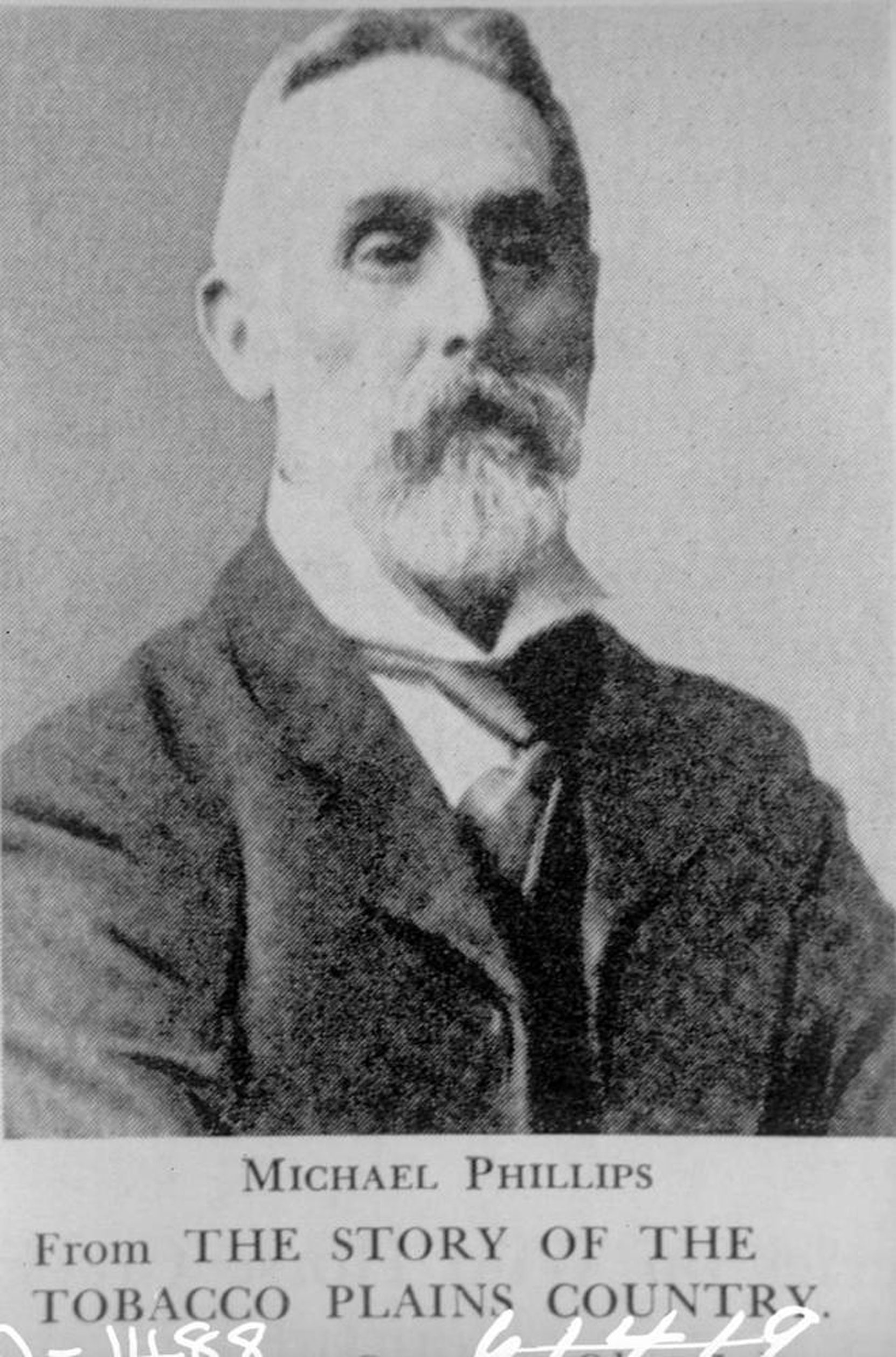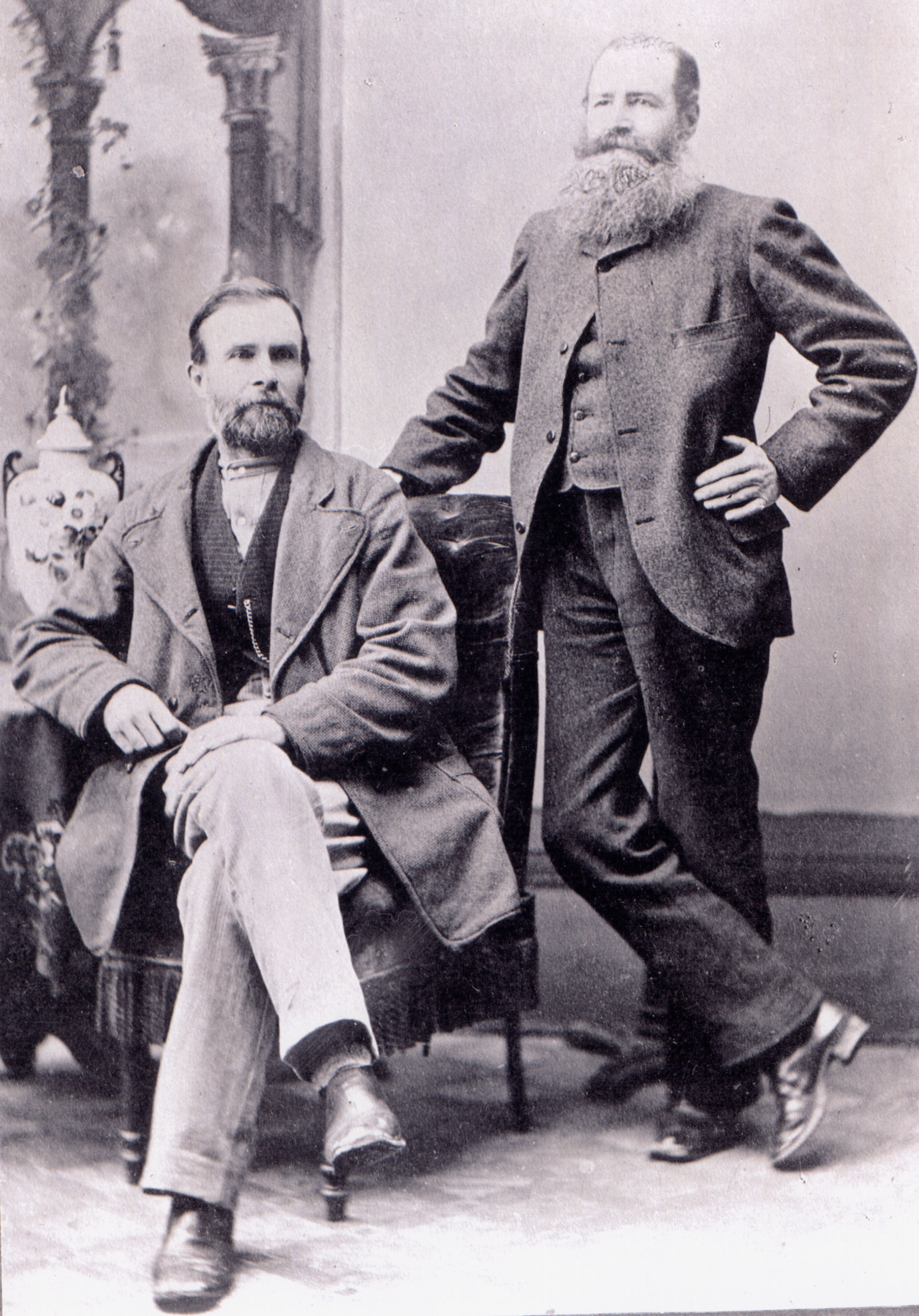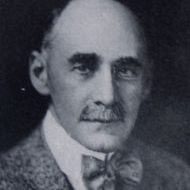Michael Phillipps

From Chapter 1 of our Butchart Gardens History.
“The Fernie brothers’ government positions brought them into contact with Michael Phillipps, one of the more colourful characters among the late 19th century Kootenay settlers. Among his contemporaries, Phillipps “bore the reputation of being afraid of neither man, beast or the Devil.”
Until 1869, Michael Phillipps had worked for the Hudson’s Bay Company as the factor, or officer in charge, at the Hudson Bay Company’s trading post of Fort Kootenay. His departure from his job at Fort Kootenay may not have been voluntary; shortly before Phillipps left Fort Kootenay, an examination of Fort Kootenay’s record books by Roderick Finlayson, the Hudson Bay Company’s Chief Factor in Victoria, had revealed some irregularities for which Phillipps was blamed.
In the fall of 1873, Michael Phillipps made two discoveries which had a major impact on the economy of the Kootenays and the fortunes of the Fernie brothers. As Phillipps described it, he was exploring for gold along “the upper waters of the Elk River.” Instead of gold, he found coal. But Phillipps wasn’t interested in coal and since his “sole companion, John Collins, was a trapper and cared little for [gold] prospecting and as the formation of the country, however promising for coal, was very discouraging to the gold hunter [in other words, Michael Phillipps] our trip soon became a hunting and trapping expedition.”
Phillipps and Collins followed Michel Creek and “were surprised to find large trails that were certainly not elk trails…..We found the trees covered with buffalo hair.” Buffalo hair on the trees was considered highly unusual since there weren’t supposed to be any buffalo in the mountains; Phillipps and Collins thought the nearest buffalo herd was on the prairies, a hundred kilometers to the east. Wondering how buffalo could have traveled into the Rocky Mountains from the prairies, the two men followed the buffalo trails and eventually came out on the plains on the eastern side of the Rocky Mountains.
In 1873, this was a discovery of major importance; “it became evident to both of us,” Phillipps said later, “that we had passed through the Rocky Mountains without going over any range.” By following buffalo trails between the prairies and the Rocky Mountains, Michael Phillipps and John Collins had discovered the Crows Nest Pass.
The following summer, Phillipps returned to the Elk River in his single minded quest for gold. Instead he “could find nothing but coal and coal everywhere.” Although Phillipps did not know it, he had discovered Canada’s largest coal field. Staking a claim on this coal could have made him extremely wealthy. But he didn’t bother filing a claim; his obsession with finding gold blinded him to the financial potential of his coal discovery.
In 1875, having failed to find gold, and still showing little interest in his coal discovery, Michael Phillipps turned his attention to building a road through the Crows Nest Pass. In the summer of 1875, Phillipps “tried hard to get the B.C. Government to make a trail up the [Elk] River and through [the Crows Nest Pass].”
But Phillipps’ road building scheme ran into opposition from the B.C. Government’s leading official in the Kootenays, William Fernie. “Mr. William Fernie, the Gold Commissioner,” Phillipps wrote 30 years later, “opposed the matter, saying the Indians said there was no such pass and that there was no use wasting money.”
William Fernie’s opposition was a major obstacle but Phillipps worked hard to overcome it. Seeking support for his road building scheme, Phillipps sent a sample of the coal he had found, along with several hand drawn sketches and maps of the Elk River valley, to Dr. George Dawson, a Canadian government geologist conducting an official survey of the Rocky Mountains. Using Phillipps’ sketches, Dr. Dawson explored the Elk River for himself, later including his findings in his report to the Geological Survey of Canada, published nearly 10 years later, in 1886…..
More information on Micheal Phillipps is available in Bruce Ramsey, 100 Years of Coal Mining: The Elk River Valley, Ramsey Publications, Sparwood, B.C., 1997.

Would you like to leave a comment or question about anything on this page?
